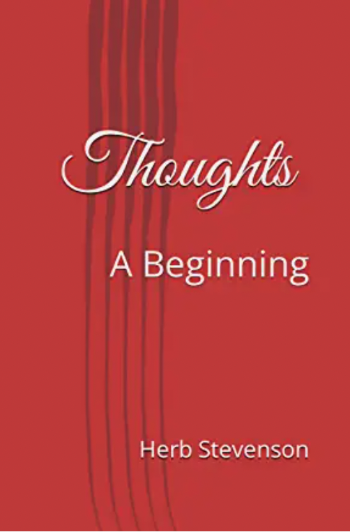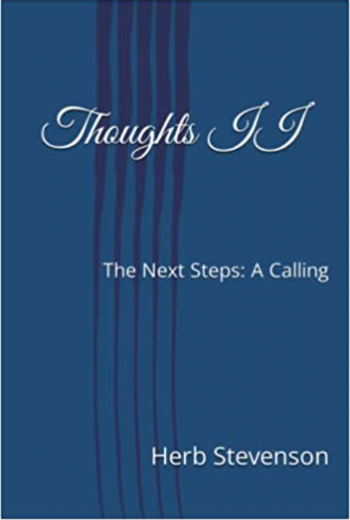The Fourteen Fundamental Principals of Vision Questing
by Herb Stevenson
The fourteen fundamental principles below are Zen-like in their presentation in that they may seem enigmatic and filled with paradoxical riddles, but when assessed and practiced as a whole, the principles enable a quality of insight into self and other that is more than the sum of its parts. This broader and deeper sense of understanding begins the process of reawakening an awareness of relational perception that has been overshadowed by conventional analytic problem solving.
One: Visioning is a personal process that is begun in isolation; however, it is fundamentally conversational and social.
Implicit to this principle is that we are never truly alone. Even in isolation, we are accompanied by internal thoughts and compelling pictures of one's self. These thoughts and pictures lose their power to dictate how to see the world, however, when they are extracted from the social and cultural environments that initially gave them their authoritative meanings. Still, the individual's self-removal from the external environment is temporary; the intention is to return, to make the reverse transition that brings him or her once more into relatedness, but with deeper insights and new conceptions of possibilities. In corporate organizations, this transition could show itself as a shift from dictates to curiosity, from argumentative discussions to open dialogues.
Two: Even though it may seem that nothing is happening at the time, the experience itself changes the person, group, and/or organization.
The vision questing process encourages distancing oneself from "normal," everyday vision; it inspires a sense of having opened one's eyes for the first time. Initially, personal and social constructs of what constitute "reality" cloud the individual awareness of "what is." Yet as the questing principles disrupt these constructs by breaking perceptual mirrors of the past, a new, broader way of perceiving evolves. Often, this experience of moving beyond the mundane brings with it a deep, internal knowing that surfaces through the creation or emergence of compelling internal pictures, similar to the deep sense of self a child experiences when lucidly day-dreaming about his or her future—as a jet pilot, perhaps, or a champion of the community, or a time-traveler.
Three: The experience enables us to become more of who or what we are, and therefore changes how we are in the world.
Questing allows our innermost qualities to surface within our awareness, and therefore within our day-to-day world. This surfacing and embrace of the deepest and perhaps most hidden integral elements of personality and character correlates to the fundamental principle of the Paradoxical Theory of Change, which postulates that the more fully we are able to be who we already are, the more we will change.
Four: Visions come to children, and to adults who can make themselves like children.
This principle echoes Dannemiller's Whole-Scale Change premise to bring open-mindedness together with open-heartedness. This "child-like," passionate world is one wherein judgment is suspended and playfulness is possible, even necessary. It is that place where "what is" is defined through moment-by-moment experience instead of through various pre-existing internal constructs or through dictates from the outside and from the past.
Five: Vision comes when we are humble and pitiable.
Vision questing in its earliest form has been called "crying for a vision" and "lamentation." More recently, vision questing is described as being receptive and vulnerable, being at the boundary of oneself, or making contact with the Self or Other at the edge of discomfort. These characteristics mark a place where the veiled defenses of how to be in the world are lifted—like the moment just before one acknowledges that the emperor has no clothes.
Six: Vision's power comes as we listen to our own, internal stories.
We all carry within us domineering voices from the past as well as the unwritten yet indelibly known rules of being a member of a family, a community, or an organization. Gestalt theory refers to these internal constraints as introjects—image-creating and behavior-controlling concepts that we have "swallowed whole," that is, taken into ourselves on faith or demand without our conscious and/or reasoned input. These introjects are in many ways unconnected to the present, yet they are still impacting every moment of one's life. They are personal and/or social constructs that we have maintained as ways to "do" ourselves or ways "to be." Vision questing encourages these internal stories to surface, to come into awareness. As we give voice and ear to these internal stories, older and more deeply personal stories can begin to be told and, in the process, reborn.
Seven: Vision's power comes as we learn to communicate with our deepest selves.
Our deepest self is often the site of terrible fears and "unspeakables." By
allowing these two negative aspects to fully and clearly emerge, we can
decide upon and release what is no longer applicable. But old dreams
and hopes may also surface from these deepest selves, reminding us of
a forgotten self, of who
and what we really are.
Eight: Vision's power comes when we can honor those dreams that energize the very essence of who we are and how we want to be in the world.
Forgetting or repressing one's heartfelt dreams in the interest of complying with social expectations banishes and damages the soul. Remembering the dreams of the soul soothes us deeply, and reminds us of our sense of purpose and of that which creates meaning in one's life.
Nine: Vision's power comes to us when we can be open to something greater than ourselves.
In religious and highly personal terms, what is greater than ourselves is the power of God, Spirit, Buddha, or any other worshiped or revered Being. In organizational terms, the essence of this feeling of the existence of something greater than oneself is tied also to a sense of relatedness with others. In the U.S. Marines, for example, this sense is named Esprit de Corps: the spirit of the body of individuals sharing membership in this social, purposeful organization. The complementary action of those who share an understanding of being in relation with, and dedicated to, something greater than themselves is known as service.
Ten: Vision's power comes as we listen to the stories around us.
Part of the success of most large-scale change is accomplished through storytelling. Listening to the stories of others begins to open our minds and hearts, if we will only sit with the story without judgment, allowing ourselves to be aware of how the story is affecting us physically, mentally, emotionally, and spiritually. Being eager to respond immediately with our own story can distance us from the storytelling other. The story we listen to well, without judging or forecasting, can touch our heads and our hearts in unforgettable ways.
Eleven: Vision's power comes when the story of a person's life joins the circle.
Building sufficient ground for a clear and compelling picture to surface enables the person to regain a sense of community with all of mankind and with nature, and to assume responsibility for one's place in the world. As the vision of the individual surfaces and joins with others', a deep sense of belonging is engendered. Such belonging becomes the "container" that holds and protects the shared vision.
Twelve: Vision's power comes when a person realizes a story that already exists.
Often, vision is experienced as a deep knowing, akin to double loop learning or the 100 Monkey phenomenon. Although the vision is inevitably something that already exists, the awareness of it as a deep knowing is new. Much of what makes a true vision so powerful and so compelling, then, is in fact its unfolding of an awareness of what has always existed.
Thirteen: Vision's power comes when we add a new episode to that story.
The personal vision illuminates how the world is different because of one's single self, and brings us to a realization that "fate" is not what happens to us, but is what we are when we are true to ourselves. Hence, the personal vision expresses a stage of "coming into one's own," wherein the individual has stepped fully into who he or she is as a mature and contributing member of a community. The organizational vision, similarly, kindles the awareness of how the world will be different because of the organization's existence in it. The organization's visioning experience is akin to coming to understand the fullness of its existence in very basic but powerful terms—in terms of the people who will be fed, not in terms of the number of jobs provided, or in organizational quality of life, or in amount of profit gained. Vision provides exquisitely human depth to the organization.
Fourteen: Vision's power comes when the story of a person's life becomes that of life as a whole.
The questing process results in a sense of interrelatedness, captured in the Lakota phrase Mitakye Oyasin, which means "all one tribe" or "all my relations." This interrelatedness comes as a sense of oneness or wholeness with all facets and beings of life. It is a deep knowing that each action of each individual or organization has significant consequences for the whole of life. Such understanding shifts the focus, of the individual or of the organization, to a truly world view.

 Thoughts, A Beginning
Thoughts, A Beginning Thoughts II
Thoughts II Thoughts III: Creating the Container
Thoughts III: Creating the Container